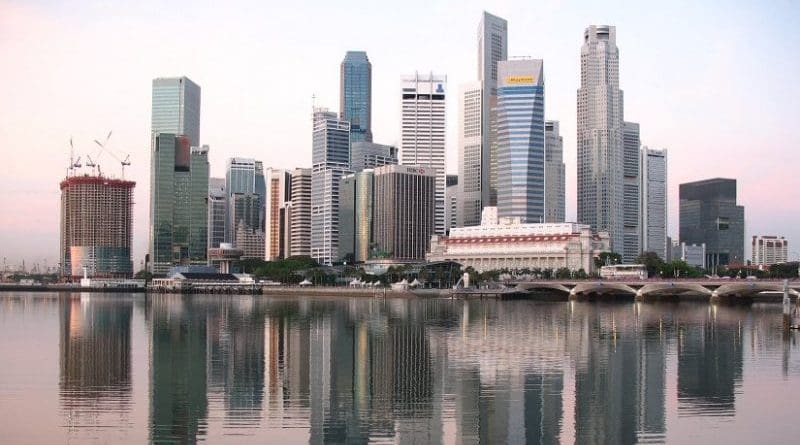Trans-Pacific Partnership: Now It Gets Difficult – Analysis
By RSIS
A meeting of officials from nine countries in Singapore next week will decide whether the Trans-Pacific Partnership will fly or flounder. Much depends on whether pre-talks rhetoric can be translated into reality.
By Deborah K Elms
TRADE OFFICIALS from across nine countries will be meeting next week in Singapore, starting 28 March 2011, for the next round of negotiations on the Trans-Pacific Partnership (TPP) talks. This is the sixth time officials have met for the TPP, with the goal of completing the agreement by the APEC meeting in Honolulu, Hawaii, in November.
The Singapore talks are going to be difficult. For most of the previous negotiations, officials have been able to talk in general terms about their goals and objectives. The TPP is supposed to represent a “21st century, high-quality” agreement. It will link up nine countries in three continents: Australia, Brunei, Chile, Malaysia, New Zealand, Peru, Singapore, United States and Vietnam.
Two Key Problems
Starting in Singapore, however, the negotiators have to begin matching sweeping rhetoric about quality with the more dirty, sometimes challenging reality on the ground. Rather than talking in abstractions, officials are arguing over specific texts and drafting new rules that will govern trade between nine very diverse economies. This is where things become complicated. In the Singapore round, officials will confront at least two different types of problems.
Firstly, the nine TPP members are already linked by 25 different agreements at the bilateral or regional levels. For example, Singapore and New Zealand already have three different agreements in place for handling trade. Each of these existing agreements has slightly different provisions. Trade in services is handled differently across the bilateral and regional agreements. Any new TPP arrangements have to take these existing agreements into account.
Since many of the existing trade agreements were carefully crafted to bring benefits to some groups and minimise losses for others, some of these compromises may be undone by the TPP negotiations.
Up until now, it has not been clear exactly which firms, sectors or industries located in which countries might be harmed by the new rules. As officials move to drafting texts, the picture will become much clearer by the end of the week. This will make it harder for some countries to reach agreement.
Secondly, given the hype in this negotiation so far, it was always going to be difficult to live up to expectations. Some of the objectively “good” ideas are now starting to run into the reality of political and economic conditions in member states. An economist would argue that a truly “high quality” agreement would seek to reduce all tariff barriers to trade in goods to zero. This would allow exporters located in any of the nine members to send goods across the border in another member without paying any tariff. This would greatly expand market access opportunities for member state exporters and increase products available to consumers and producers.
Although Singapore has tariff levels at zero, other TPP members do not. Depending on the product, tariff levels can be prohibitively high. Under the ASEAN-Australia-New Zealand Free Trade Agreement (AANZFTA), Malaysian tariffs on some water products and other beverages can be 15%. Cement or chemicals can be subject to 18% tariffs, even for partner countries receiving these preferential rates.
Kumquats (a type of citrus fruit) entering Vietnam are subject to a 40% tariff for AANZFTA partner exporters through 2022 and beyond. Any plans to drop tariff levels as a result of TPP negotiations are likely to be met with hostility by Vietnamese citrus farmers who may face an influx of foreign, competing products in the domestic market.
As the negotiations proceed, it will be increasingly clear how much openness will be required from which sectors. Citrus growers, bottled water distributors and cement manufacturers will soon learn whether they are included in the “winning” or “losing” side of this trade agreement and how much they stand to gain or lose.
Watershed moment?
Finally, one important component of the 21st century aspirations for the TPP is a series of new issues that have not been addressed in other trade agreements. This includes topics like encouraging small and medium enterprises or streamlining regulations across member states.
When they meet in Singapore, officials have to either translate these ideas into concrete plans or to jettison the topics. Negotiations have reached such a fever pitch with the deadline for conclusion in only eight months that officials cannot afford to spend time on topics that will not be ready by November. Abandoning or watering down the ambition in these horizontal issues, however, also dilutes the “high quality” nature of the entire agreement.
The Singapore round of talks will probably be remembered as a watershed moment in the TPP negotiations when rhetoric met reality.
Deborah K Elms, Head, Temasek Foundation Centre for Trade & Negotiations, S. Rajaratnam School of International Studies (RSIS), Nanyang Technological University.

